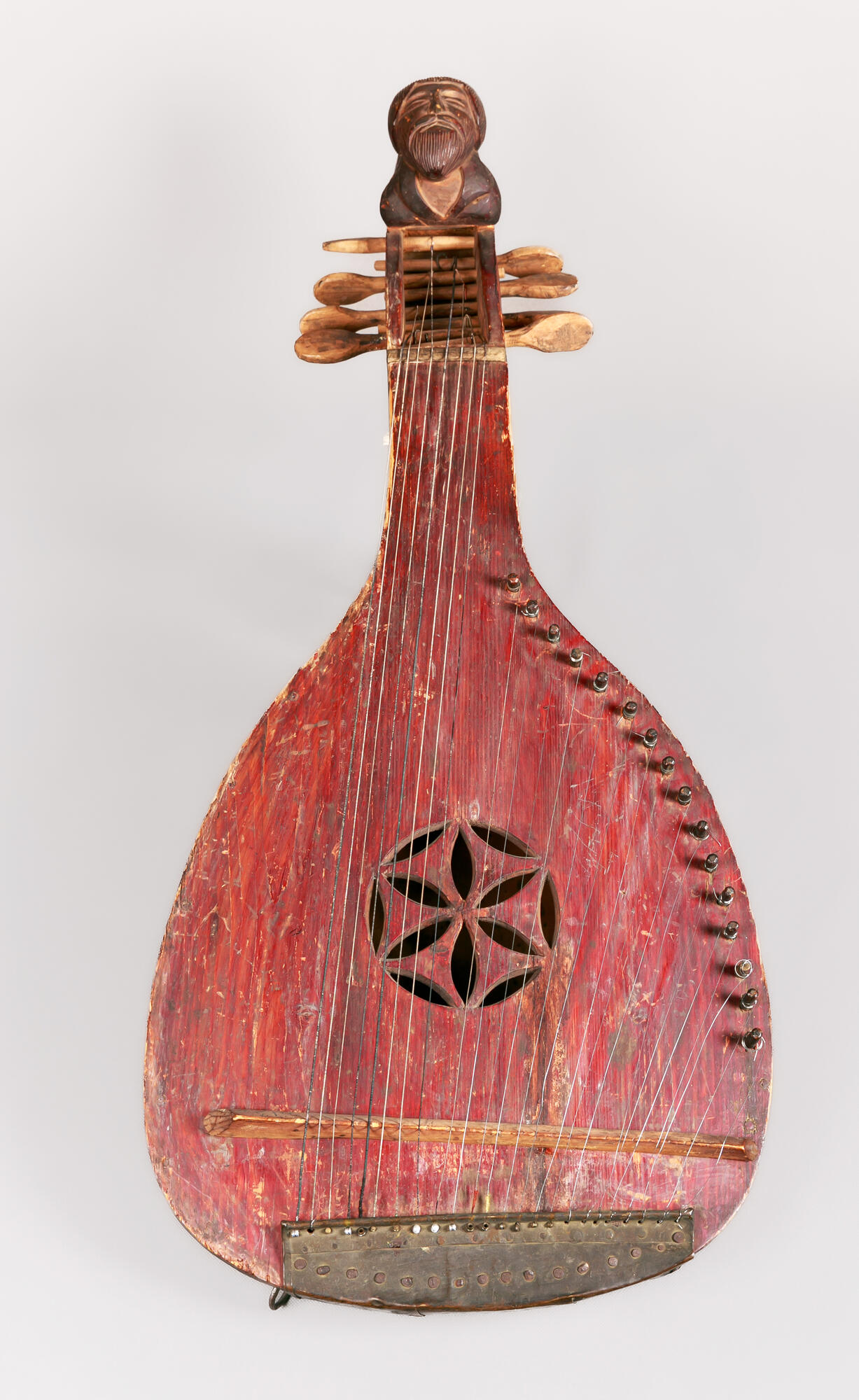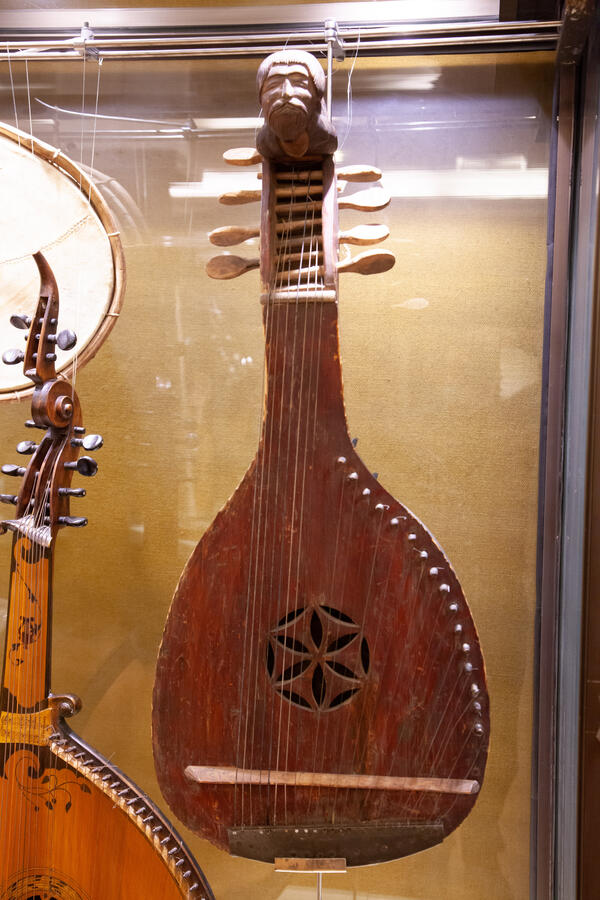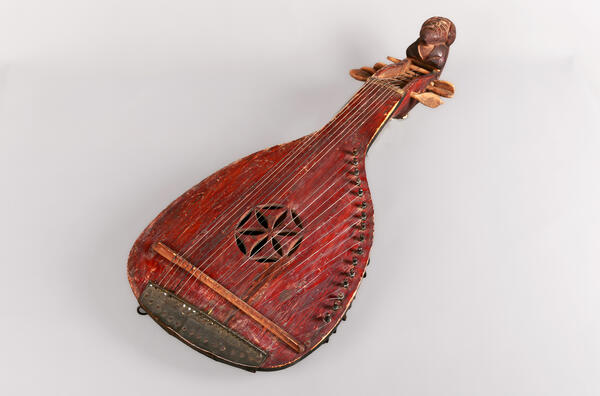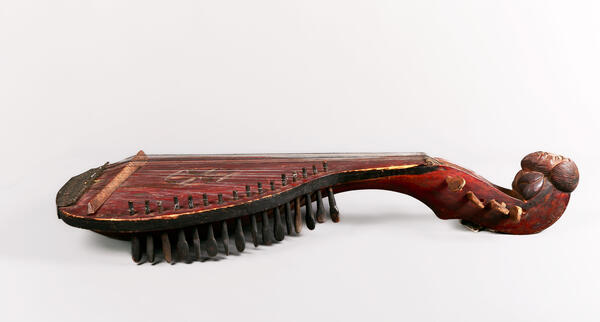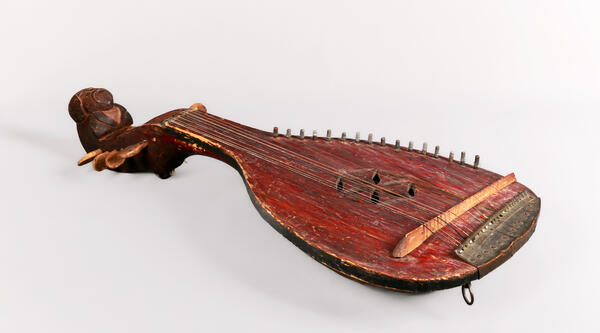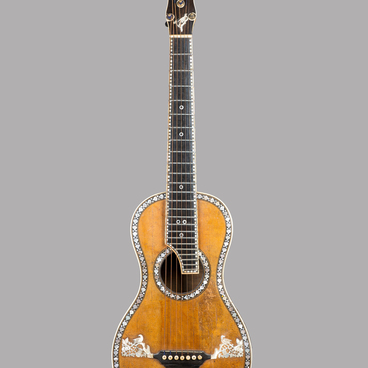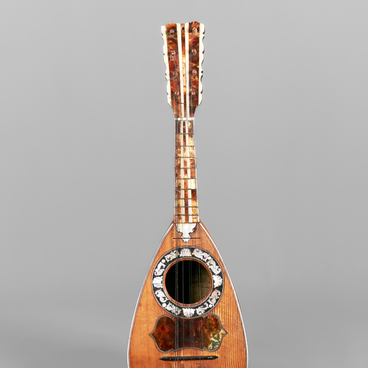The bandura is a Ukrainian plucked instrument with a large number of strings. It was developed based on the kobza, an instrument of the lute family. The bandura was used to provide accompaniment for songs about history and everyday life, and epics known as “dumy.”
In the past, bandurists played their music to inspire people to fight against the enemy. The term “bandura” entered the Ukrainian language in the late 17th century or the first quarter of the 18th century. It was derived from the Polish term “bandura” that originated from the Greek “pandura” which was also a lute instrument.
The bandura has a large resonator body with a short fretless neck. The instrument is usually carved from a solid piece of wood. The bandura has two types of strings: long bass strings strung along the neck and short treble strings known as “prystrunky, ” strung across the soundboard in a fan-like shape.
At the bottom, the strings go over the saddle and are attached to the bridge. The bandura has a soft, slightly muted tone. As only open strings are used in playing the bandura, the available notes and their range depend entirely on the number of strings. There are two main types of banduras known as the Chernihiv-style (or Kyiv-style) and the Lviv-style (or Kharkiv-style).
The instrument from the museum’s collection has 8 bass strings and 16 treble strings. The headstock is shaped as the head of an old man. An inscription is carved into the back side. It says that the bandura belonged to the famous kobzar Mikhail Kravchenko (1858–1918). He lost his sight when he was 15 years old. At the age of 17, he started learning to play the bandura under the Mirgorod musician Samuil Yashny, and later under the virtuoso bandurist Fyodor Gritsenko-Kholodny.
Mikhail Kravchenko not only sang old Ukrainian dumy, songs of lamentation, psalms, and folk songs but also wrote his own compositions. Among some of the famous songs were “The Sorochyntsi Events of 1905” and “Black Sunday in Sorochyntsi” dedicated to the peasant rebellion in the village of Velyki Sorochyntsi that was brutally crushed by the authorities.
Mikhail Kravchenko performed in many cities of the Russian Empire, including Saint Petersburg, Moscow, Kharkiv, and Odessa. In 1911, he participated in a concert organized in Kyiv in honor of Taras Shevchenko.
In the past, bandurists played their music to inspire people to fight against the enemy. The term “bandura” entered the Ukrainian language in the late 17th century or the first quarter of the 18th century. It was derived from the Polish term “bandura” that originated from the Greek “pandura” which was also a lute instrument.
The bandura has a large resonator body with a short fretless neck. The instrument is usually carved from a solid piece of wood. The bandura has two types of strings: long bass strings strung along the neck and short treble strings known as “prystrunky, ” strung across the soundboard in a fan-like shape.
At the bottom, the strings go over the saddle and are attached to the bridge. The bandura has a soft, slightly muted tone. As only open strings are used in playing the bandura, the available notes and their range depend entirely on the number of strings. There are two main types of banduras known as the Chernihiv-style (or Kyiv-style) and the Lviv-style (or Kharkiv-style).
The instrument from the museum’s collection has 8 bass strings and 16 treble strings. The headstock is shaped as the head of an old man. An inscription is carved into the back side. It says that the bandura belonged to the famous kobzar Mikhail Kravchenko (1858–1918). He lost his sight when he was 15 years old. At the age of 17, he started learning to play the bandura under the Mirgorod musician Samuil Yashny, and later under the virtuoso bandurist Fyodor Gritsenko-Kholodny.
Mikhail Kravchenko not only sang old Ukrainian dumy, songs of lamentation, psalms, and folk songs but also wrote his own compositions. Among some of the famous songs were “The Sorochyntsi Events of 1905” and “Black Sunday in Sorochyntsi” dedicated to the peasant rebellion in the village of Velyki Sorochyntsi that was brutally crushed by the authorities.
Mikhail Kravchenko performed in many cities of the Russian Empire, including Saint Petersburg, Moscow, Kharkiv, and Odessa. In 1911, he participated in a concert organized in Kyiv in honor of Taras Shevchenko.
